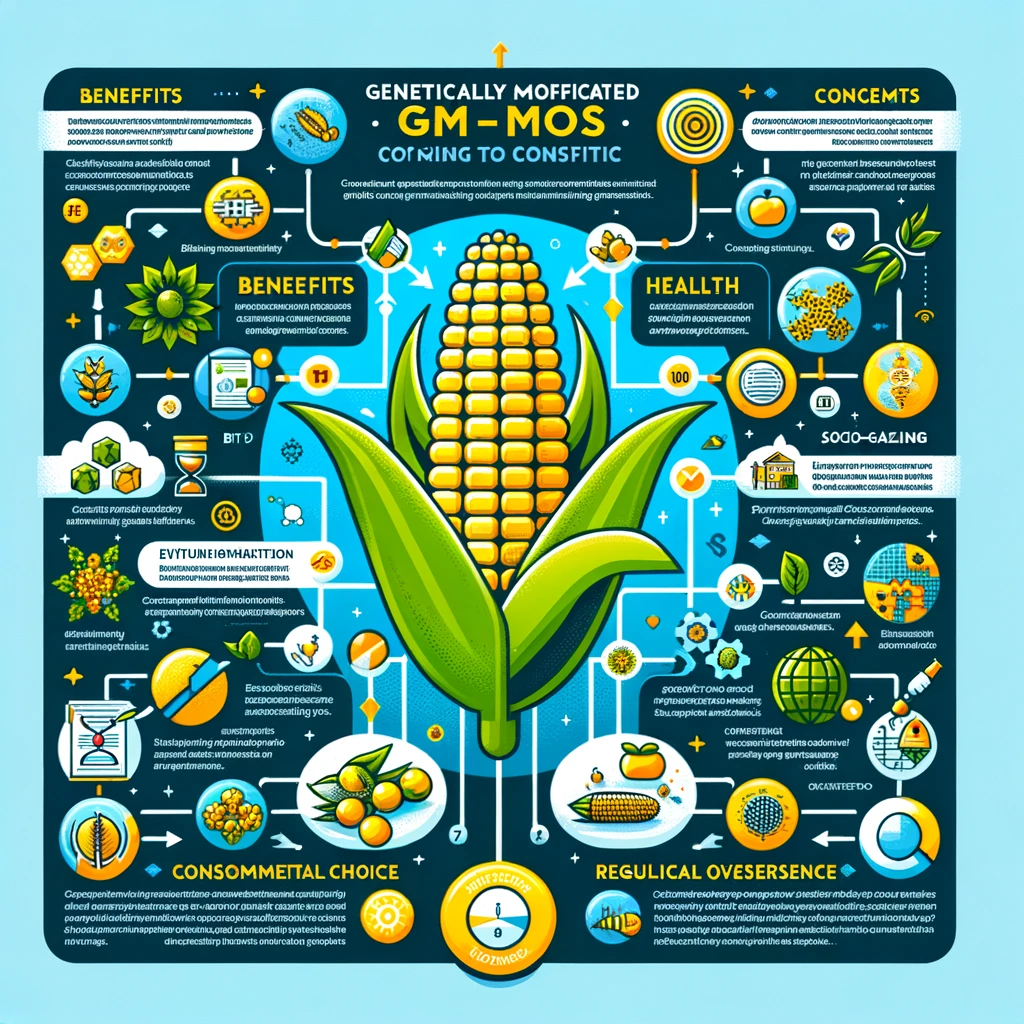
Exploring Genetically Modified Organisms (GMOs): Benefits, Concerns, and the Future of Food

What are genetically modified organisms (GMOs)? Give an example.
Genetically Modified Organisms (GMOs) are organisms whose genetic material has been artificially manipulated in a laboratory through genetic engineering. This technology allows scientists to move genes from one species to another, creating organisms that possess traits that do not occur naturally in their species. The modification aims to enhance certain characteristics such as increased resistance to pests or herbicides, improved nutritional content, or better yield and durability.
Example: Bt Corn
One well-known example of a GMO is Bt corn. Bt corn has been genetically modified to produce a protein from the bacterium Bacillus thuringiensis (Bt), which is toxic to certain pests like the European corn borer. The Bt toxin disrupts the digestive system of these insects when they eat the corn, effectively protecting the crop from damage without the need for chemical pesticides. This modification allows for increased crop yields and reduced use of chemical insecticides, which can be beneficial for the environment and economic efficiency. However, the use of GMOs, including Bt corn, continues to be a subject of public and scientific debate regarding safety, environmental impact, and ethical considerations.
The debate surrounding GMOs touches on several key concerns:
- Safety for Human Consumption: One of the primary public concerns regarding GMOs is their safety for human consumption. Critics argue that GMOs have not been tested enough to ensure they do not pose health risks, such as allergic reactions or long-term health effects. Proponents, however, point to numerous studies that have shown GMOs to be as safe as their non-GMO counterparts.
- Environmental Impact: There is also debate over the environmental impact of GMOs. While GMOs like Bt corn can reduce the need for chemical pesticides, there are concerns about the potential for creating pesticide-resistant insects, cross-breeding with wild relatives, and effects on non-target organisms (such as beneficial insects or soil microorganisms). The long-term ecological consequences of widespread GMO cultivation remain a subject of study and discussion.
- Economic and Social Issues: GMOs raise economic and social issues, including corporate control of the food supply (as GMO seeds are often patented), impacts on small-scale farmers (who may not afford the technology or may be sued for patent infringement through accidental cross-contamination), and the potential for GMO crops to dominate the market, reducing biodiversity.
- Labeling and Consumer Choice: There is ongoing debate about the labeling of GMO products. Many advocate for mandatory labeling to ensure consumers can make informed choices about whether to consume GMOs. Others argue that such labeling is unnecessary if the products are deemed safe and may unjustly stigmatize GMOs.
- Regulatory Oversight: The regulation of GMOs varies significantly between countries, with some nations adopting strict rules and others taking a more permissive approach. This disparity raises questions about the global governance of GMOs, trade implications, and the ability to monitor and manage their spread and impact.
Despite these debates, GMOs remain a significant part of modern agriculture and biotechnology, offering the potential for addressing food security challenges, especially in areas facing climate change, pests, and diseases. The development and use of GMOs continue to evolve, with newer techniques like CRISPR-Cas9 offering more precise genetic editing capabilities, potentially addressing some of the concerns associated with earlier GMO technologies.
In conclusion, while GMOs like Bt corn represent significant scientific achievements with the potential to improve crop yields and reduce pesticide use, they also bring complex ethical, environmental, and social questions that society continues to grapple with. The future of GMOs will likely depend on ongoing research, dialogue, and regulation that balances technological advances with caution and consideration for health, environment, and social justice.